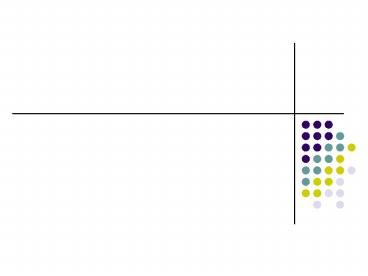Multimedia Communication Systems - PowerPoint PPT Presentation
1 / 13
Title:
Multimedia Communication Systems
Description:
Low bit rate (very narrow band conferencing) over analogue telephone lines. H324. PSTN. Narrow band conferencing over IP (Packet Based Networks). H323. IP ... – PowerPoint PPT presentation
Number of Views:384
Avg rating:3.0/5.0
Title: Multimedia Communication Systems
1
(No Transcript)
2
Multimedia Communication Systems
- Part 2
3
The Network
- Internet / Broadband Internet
- 56Kbps for normal dial-up connection and up to
2Mbps for broadband Internet - Asynchronous transmission bursty packet
transmission - Low available bandwidth
- Internet can subject to many delays
4
The Network
- Local Area Network (LAN)
- Asynchronous packet based system
- Provides multipoint desktop conferencing within
organisation cheaper than ISDN - Similar to Internet/broadband Internet (using
Internet Protocol, IP) - Networks can subject to many delays
5
The Network
- Integrated Services Digital Network (ISDN)
- Higher bandwidth and quality than Public Service
Telephone Network (PSTN) - Allow multiple digital channels to be operated
simultaneously - One important feature of ISDN is its Guaranteed
Quality of Service (GQoS) - for example a
384kbit/s link is dialled then unless there is a
fault condition the full 384kbit/s will be
provided for the duration of the conference.
6
The Network
- High Speed Networks
- Examples
- Asynchronous Transfer Mode (ATM) Network
- JANET Network
- SuperJANET Network
- Offers speed up to 2.4Gbps
- Offers Guaranteed Quality of Service (GQoS) and
continuous data transfer rate
7
Video Transmission (example)
- True colour image 24bits per pixel
- Full screen 640x480 required 7 million bits
(about 7M bit) - Smooth video clip at least 25 frames/second (25
images transmit in a sec) - So, 7 million bits x25 175 million bits/second
required (175 Mbps) !!!
8
The Compression Standards
- Video conference link requires
- Equipments
- An intervening network to carry the signal
- ITU-T has produced several umbrella
videoconferencing standards, collectively known
as the H.3xx videoconferencing standards.
9
The Compression Standards
10
IP based video conferencing standards
H.261 Video CODECDefines the way in which the
picture information is compressed and coded to
enable transmission over low bandwidth networks.
It is the baseline coding which is mandatory for
most videoconferencing systems to ensure
interoperability at a basic level. G.711To
ensure interoperability between systems G.711 is
the baseline audio coding algorithm. It is
mandatory in most videoconferencing systems. This
coding produces an upper frequency limit of
3.4kHz/s (i.e. telephone quality) and occupies up
to 64kbit/s of data.
11
ATM based Video Conferencing standards
More standards (more features are included )
12
CODEC
- Coder Decoders (CODECs) used to perform
digitisation as well as compression and
decompression - Available in the forms of hardware and software
- Hardware no burden on CPU
- Software relies on CPU easy to install and
cheaper
13
Block Diagram of an H.323 CODEC































